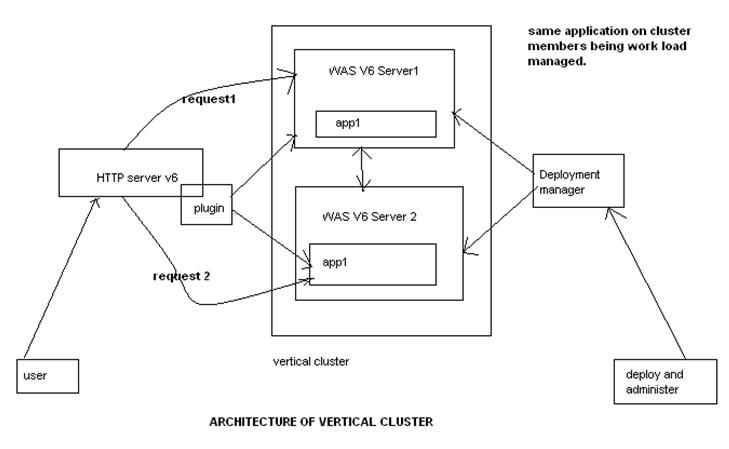Websphere Clustering and Work Load Management
Work Load Management [WLM]: WLM means share the requests across multiple application servers.
Important terms
- Scalability
- Load Balancing
- High Availability
- Failover
WLM is implemented by using the clusters of application servers.
Uses of WLM
- WLM provides fail over so that application availability is increased.
- WLM optimizes the distribution of requests.
Logical grouping of applications is called a cluster.
Instead of installing an application on an individual server, Install it on a cluster so that the application is automatically deployed on each application server which is a member of the cluster.
Vertical cluster: when the cluster members are defined on the same machine.
Horizontal cluster: when the cluster members are defined on different machines. Also, a combination of vertical and horizontal clusters can be made within the same machine.
Vertical cluster architecture:
The application app1 is installed on the cluster. This application was installed on both the application servers automatically when we deploy the app1 on the cluster through the Deployment manager’s admin console.
The deployment manager and http server can be in the same machine as the cluster member or in different machines.
[For production it is recommended to be in different machines]
We need to generate the plugin-cfg.xml file for the cluster environment.
This file contains the necessary information to work load manage requests for the cluster members.
It depends on the factors like …
- HTTP session creation
- Load balance weight value in plug-in file.

Note: Cluster members will have only applications in common. Other attributes of the application servers in a cluster may differ.



Leave a Reply
You must be logged in to post a comment.